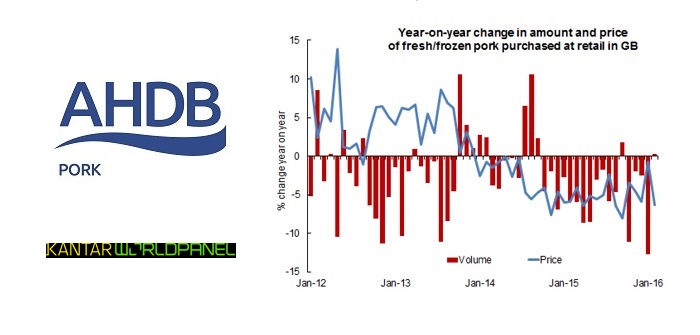Fresh pork is struggling to attract retail demand despite reducing price levels in recent years, reflecting a new sales pattern which started to develop in mid-2014 and which AHDB Pork says it doesn’t yet really understand.
“Normally, as prices for a product decrease, we expect it to become more attractive to consumers, leading to higher purchases,” said AHDB Pork. “Conversely, as prices rise, less is bought. Usually, that is the pattern which is observed for meat products.”
That was until the middle of 2014, according to analysis of data from Kantar Worldpanel. Since then, previously ‘normal’ patterns appear to have changed.
“Prices paid for pork in retailers have been consistently lower (since mid-2014), typically by around 5% compared with a year earlier,” said AHDB Pork. “Despite this, with a couple of exceptions, purchases of fresh/frozen pork have also been lower than a year before.”
Further analysis of the data shows that, in effect, the price which consumers are willing to pay for pork has decreased. Since autumn 2014, it seems that the average price needs to be around 50p/kg (about 10%) cheaper to generate the same volume of sales as before.
The decline in demand for fresh/frozen pork is not limited to GB, with figures from Ireland, France, Germany and Italy also showing lower pork sales despite falling prices. Of the major EU consumer markets, only Spain bucks this trend, at present.
“So why is retail demand for pork struggling so much?” asks AHDB Pork. “In truth, we don’t yet fully understand and further work is underway within AHDB to get to the bottom of the situation. There are factors which are acting against the category but none really explains why things changed during 2014.”
Factors being considered include the rise of the convenience market and pork’s possible image problem among consumers, particularly in younger age groups.
“With GB supplies set to rise further in 2016, addressing the decline in retail sales will be crucial to any recovery in the pig market,” said AHDB Pork. “In part, this will mean rejuvenating the image of pork, one of the aims of the ongoing Pulled Pork campaign.”




